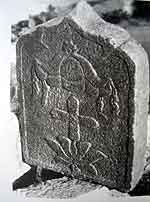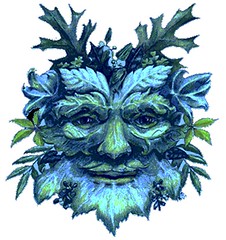
One particularly dark morning last week, I started my car down the driveway on my way to work, and then stopped it again.
On the lawn, not 30 feet away, stood two large coyotes.
This was extraordinary. Coyotes are not historically native to New England, but most of us who live here are at least peripherally aware that their range has expanded eastward over the last century to include the northeastern US and eastern Canada. (Eastern coyotes are bigger than western ones, because their ancestors crossbred with wolves during their migration. Some studies put the proportion of wolf DNA in the eastern coyote at around 28%.) In the last two decades their population has risen smartly and they are being sighted more frequently in suburbia, as surrounding farmland falls out of use and reverts to scrub and woods. Nevertheless, we are usually aware of their presence more from the occasional eerie sound in the night or cat that doesn’t come home in the morning than from personal encounters. They are largely nocturnal, and tend to be intimidated by humans in daytime, avoiding us if they can.
Yet here were two of them, up close. I rolled down my window. "Hey, what are you doing here?" I asked them. They stood there calmly holding their ground for about a minute, unintimidated. I stared straight into their eyes, and they into mine. Then they slowly turned away and wandered nonchalantly over toward the neighbor’s yard, and I continued down the driveway toward my civilized obligations.
I think they were out in the open that morning because it was so dark. The mornings are at their darkest right now. This is the season of the winter solstice, the longest nights and shortest days of the year. It is the season around which many cultures in many parts of the world have independently developed ceremonial observances to express the spiritual hope that darkness and despair will not prevail, and that light will return.
In the Christian tradition that is the spiritual heritage of Unitarians and Universalists, this season and the hope it expresses are known as “Advent”. That hope is expressed as well as any culture has ever expressed it in the opening chapter of the Gospel of John:
“The light shines in darkness, and the darkness has never overcome it.” In the Christian view, of course, that darkness was epitomized by the rigid, spiritless religion practiced in the Jerusalem Temple and the cynical, oppressive civil authority exerted over Judea by Rome, and that light was personified in the infant Jesus. This Jesus would grow up to preach a novel new gospel – that a “Kingdom of God” would come that was not the exclusive province of a distant supernatural heaven, but that would soon find its fulfillment on earth as well, and that we ourselves, in all our human inadequacy, were its chief builders.
“The Kingdom of God is within you,” he preached.
“Thy Kingdom come, on earth as it is in heaven,” he prayed. He used witty, ironic parables to drive home his points. His ironic short tales can still put modern masters of the genre like O. Henry to shame.
This grown Jesus died cruelly, almost 2,000 years ago now, brutally executed on trumped-up charges of sedition and insurrection. Christians believe he rose again and ascended into heaven, and while antisupernaturalists may find that impossible to believe literally, in either case he is no longer here. Advent, then, is a season of waiting in darkness for the light to return, both in the celebration of an innocent baby’s birth long ago, and also in the hope for the breaking forth of a future Kingdom governed by divine principles of justice, equity and compassion, where the meek are raised up and the haughty brought low. It is the arrival of this glorious Kingdom, governed by its glorious King, that orthodox Christianity has by long tradition called the “Second Coming”.
In the meantime, though, we wait in darkness, just as in times long ago. In his poem “The Second Coming”, the Irish poet William Butler Yeats described the darkness:
Turning and turning in the widening gyre
The falcon cannot hear the falconer;
Things fall apart; the centre cannot hold;
Mere anarchy is loosed upon the world,
The blood-dimmed tide is loosed, and everywhere
The ceremony of innocence is drowned;
The best lack all conviction, while the worst
Are full of passionate intensity. And surely, many of us can find echoes of Yeats’s words in the state of our world recently.
In Navajo and other Native American cultures, Coyote is known not just as a wild animal lurking around the fringes of human settlement, but also as a mythological figure, a deity. In Navajo lore, when Coyote appears, something very different and unforeseeable is usually about to happen. He is sometimes a gadfly, pestering and distracting; he is sometimes a trickster, waiting slyly and patiently to lure the unsuspecting into radically changed circumstances; he is sometimes vaguely malevolent; he is sometimes a buffoon; but in an especially fundamental sense, he is also the original source of much of the wisdom that guided the ordering of creation.
In orthodox Christianity, this same ordering principle of the universe is given other names. In Genesis it is identified with the Hebrew God, but elsewhere it is given the Greek names
Sophia (meaning “Wisdom”) or
Logos (meaning “Word”). The same first chapter of John equates these differing perceptions:
“In the beginning was the Word, and the Word was with God, and the Word was God. ... All things were made by him, and without him was not one thing made that was made.” John then goes on to identify the Word as present in the person of Jesus:
“The Word was made flesh, and dwelt among us.”In this dark Advent season, it was Wisdom in the persona not of the pure Christ Child but of the wily Coyote who so unexpectedly appeared to me. He is Wisdom as the trickster, the paradigm shifter, the sly one who laughs across the emptiness and waits unseen, and then suddenly turns everything upside down in ways that could never be anticipated. Yeats wondered:
And what rough beast, its hour come round at last,
Slouches towards Bethlehem to be born?In these dark times, I don’t know what change is in store, but I hope and believe that the shift Coyote brings will be benevolent rather than malign, just as our optimistic liberal faith urges. I see small portents at last of a favorable change in the wind, a break in the storm – or at least I would like to think I do. It is darkest just before the dawn, but the light shines in darkness, and the darkness has never overcome it.
Many regulars in the UU blogosphere know Pastor Perpetua. (If you don’t, you owe it to yourself to go check out
her blog. She rarely has time to post, but every post is a gem.) This month, in her congregation’s newsletter, she devotes some thought to the context of Advent as a season of waiting (“especially if you have small children in your life,” she writes!), and mentions that what orthodox Christians await at Advent is the Second Coming. She goes on to say that “our [UU] faith does not teach that Jesus will come again,” and asks instead, “what is coming into birth for you?”
I happened to see Perpetua a week or two ago, and I challenged her on that point. “We UUs do expect a Second Coming, at least in its figurative meaning,” I said. “We may no longer feel comfortable speaking in that idiom, but we take a back seat to no one in working to usher in the Kingdom. We may choke on ‘feudal’ or ‘patriarchal’ words like ‘kingdom’, we may not see Jesus as a manifestation of God or even affirm any sort of supernatural Being, but bringing that heaven into its fruition on earth is what we have always striven toward. If ‘the Beloved Community’ is another term for the same thing, we are still hoping and working for it every bit as devoutly as we always have.”
“But orthodox Christianity wraps it up so intractably in the person of Jesus, and we don’t necessarily, at least not any more,” she demurred. “Besides, a lot of the evangelical Christians literally expect that when the Second Coming occurs, they will be swept away from this corrupted place to meet him in the air, and that’s not just mistaken, it’s truly sinful! We don't teach that, and we never have.”
“Yes,” I agreed, “although that millennialist view of the Second Coming is not orthodox, it’s heterodox – probably even more so, and far more dangerously, than our own Unitarian view of Jesus as human. If we UUs hadn’t already watered down the word to the point of triteness, I would say it’s heretical. In the worst sense of the word.”
“That’s true, it is wildly heretical when measured against a standard of Christian orthodoxy,” Perpetua conceded. “The idea that we UUs inherited and retain many orthodox Christian beliefs and values, but merely prefer to use different words to express them now, deserves much more attention than it gets. But the thing is, those millenialists, as heretical as they are, are co-opting the popular understanding of what it means to be Christian today. For someone like me from the other end of the theological spectrum to try to reclaim the orthodox center from the heretical right is far more than I can attempt in just a little newsletter column. It’s more than I could even attempt in a month of sermons.”
And then Perpetua gave me a sly look. A Coyote look. The kind of look a court jester might have used when preparing to deliver an ironic truth.
“But you, you have a blog,” she said. “You could have some fun with it.”
Indeed, I do have a blog. And a few days later, while I was trying to figure out how to begin to develop that idea, I started my car down the driveway on a particularly dark morning to go to work. And then stopped it again.
The next day I emailed Perpetua, who as it happens spent some of her formative years in New Mexico, to ask what profound insight she might be able to offer on the surprise appearance of coyotes at Advent.
“You’ll have to wait,” was her reply.



